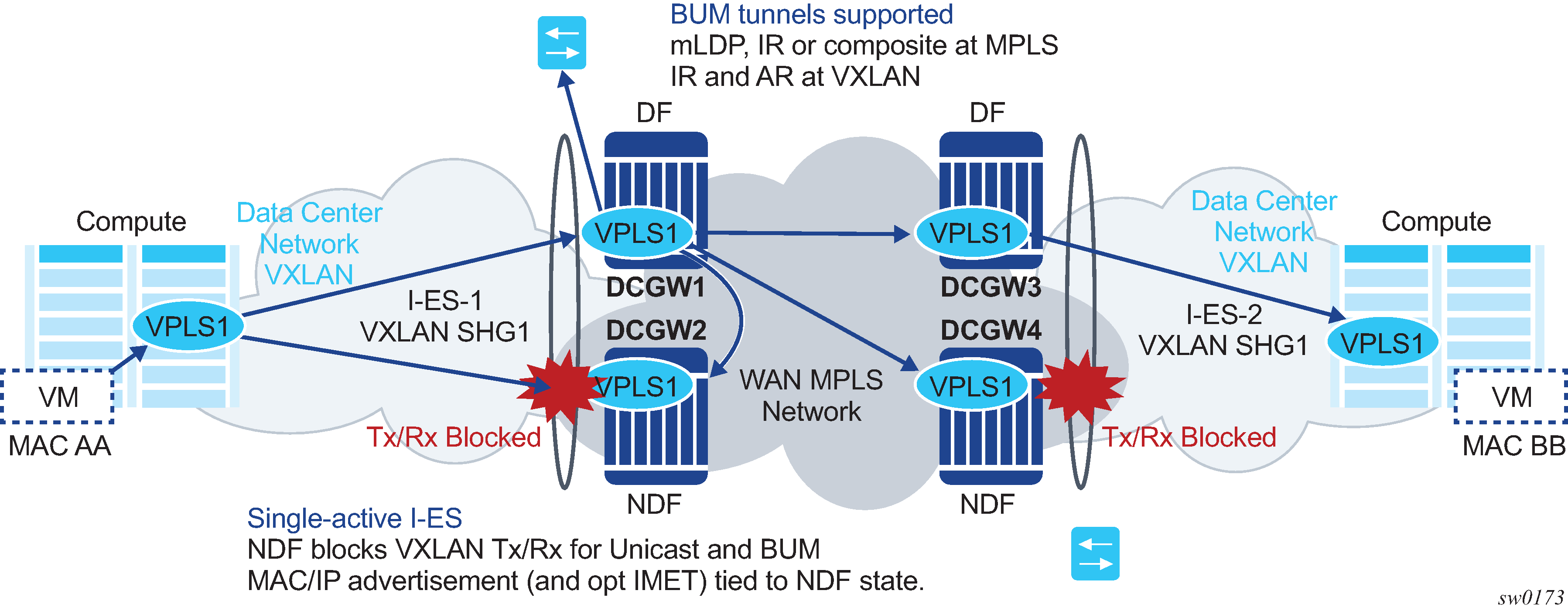When an I-ES is configured as single-active and configured as no shutdown with at least one associated service, the DCGWs send ES and AD routes as for any ES. It also runs DF election as normal, based on the ES routes, with the candidate list being pruned by the AD routes.
Figure: I-ES — single-active shows the expected behavior for a single-active I-ES.

As shown in Figure: I-ES — single-active, the Non-Designated Forwarder (NDF) for a specified service carries out the following tasks:
-
From a data path perspective, the VXLAN instance on the NDF goes into an MhStandby operational state and blocks ingress and egress traffic on the VXLAN destinations associated with the I-ES.
-
The MAC/IP routes and the FDB process
-
MAC/IP routes associated with the VXLAN instance and readvertised to EVPN-MPLS peers are withdrawn.
-
MAC/IP routes corresponding to local SAP MACs or EVPN-MPLS binding MACs are withdrawn if they were advertised to the EVPN-VXLAN instance.
-
Received MAC/IP routes associated with the VXLAN instance are not installed in the FDB. MAC/IP routes show as ‟used” in BGP; however, only the MAC/IP route received from MPLS (from the ES peer) is programmed.
-
-
The Inclusive Multicast Ethernet Tag (IMET) routes process
-
IMET-AR-R routes (IMET-AR with replicator role) must be withdrawn if the VXLAN instance goes into an MhStandby operational state. Only the DF advertises the IMET-AR-R routes.
-
IMET-IR advertisements in the case of the NDF (or MhStandby) are controlled by the command config>service>vpls>bgp-evpn>vxlan [no] send-imet-ir-on-ndf.
By default, the command is enabled and the router advertises IMET-IR routes, even if the PE is NDF (MhStandby). This attracts BUM traffic, but also speeds up convergence in the case of a DF switchover. The command is supported for single-active and all-active.
If the command is disabled, the router withdraws the IMET-IR routes when the PE is NDF and do not attract BUM traffic.
-
The I-ES DF PE for the service continues advertising IMET and MAC/IP routes for the associated VXLAN instance as usual, as well as forwarding on the DF VXLAN bindings. When the DF DCGW receives BUM traffic, it sends the traffic with the egress ESIlabel if needed.